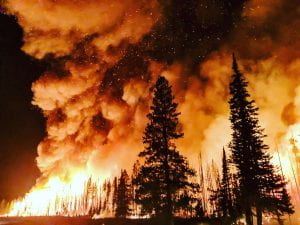Do you enjoy eating fresh seafood? Do you have fond memories of fishing trips or aquarium visits with family and friends? That means you have interacted with a fishery at least once in your life. In the northeastern United States, New England thrives on the fishing industry. Here are four things you should know about the hidden networks that provide the world jobs, food, and fun, explained through the aquatic life of New England.

More than 100 species, including finfish, shellfish, urchins, and seaweeds, are landed in the Northeast. // Credit: NOAA Fisheries
What is a fishery?
Fisheries are often defined as geographic locations where a population of an aquatic animal, like fish or shellfish, are harvested for use. This definition is expanded in practice and language to include the fishers, and their industry, or the season of the year when fishing takes place. Fisheries can also refer to a certain species across many bodies of water or a cultural use of fish populations, expanding the meaning beyond just fish themselves.
For the Northeastern United States, more than 100 species are important to the region’s fishing industries. Each of these species are their own fishery, overlapping to create the aquatic networks that are the foundation of the New England fishing industry.
What are the types?
Fisheries can be broken down into three main types: commercial, recreational, and subsistence.
Commercial fishing is professional fishing for profit. Large and small companies harvest wild caught aquatic animals or even raise animals in farms, also called aquaculture. All sizes and forms of commercial fisheries are connected in the desire to profit from harvest of aquatic animals on a larger scale.
Recreational fishing is for leisure, exercise, or competition. This can range from individuals fishing in their backyards to major fishing competitions with cash prizes for the biggest fish to charter companies that take people fishing for certain big game.
Subsistence fishing is fishing for survival and livelihood. This type of fishing is a means of survival for the people who participate, meaning they fish to feed their families and are dependent on small-scale or individual fishing in some way. In many parts of the United States, subsistence fishing is considered “invisible” and not regulated any differently than recreational fishing. However, in Connecticut a pilot study showed that fishing for food may have “substantial social and cultural significance to those who engage in the activity”.
Who manages them?
Fisheries management is determined by geography. In the United States, local and state governments control fisheries within a 3 mile boundary of shore while the National Oceanic and Atmospheric Administration (NOAA), a federal agency, controls fisheries within the 3-200 miles before international waters begin. In New England, fisheries are controlled by state governments, organizations like the New England Fisheries Management Council (NEFMC) and the Atlantic States Marine Fisheries Commission (ASMFC), and government agencies like NOAA.
Stock assessments, management plans, and catch limits are some of the ways that fisheries can be monitored. The condition of the fishery population, or the stock status, is used as an indicator of health to determine whether a fishery is overfished or sustainable. Depending on the stock status, scientists and researchers decide the necessary actions to maintain fisheries. In Massachusetts, regulators dictate the kinds of traps allowed to catch lobster in order to protect the overfishing of a declining population.
Why do fisheries matter?
Fisheries are important for cultures, economies, and overall environmental health as humans greatly rely on the work and products of the fishery industry to thrive. In the United States alone, fisheries provided 1.7 million jobs and $253 billion in sales in 2020. That ends up meaning that about 1 in every 100 dollars earned in the US came from fisheries.
However, now more than ever, fisheries are in danger.
Haddock are a staple fish in New England, feeding coastal families, engaging recreational fishers, and drawing in hungry tourists for hundreds of years. However, after the Atlantic cod fishery in New England reached a historic low in 2021, many commercial fishers fished haddock instead. In 2022, commercial landings of haddock totaled 11 million pounds and earned around $18 million in sales. But now, as of April 2023, haddock catch has been reduced to around 80% by regulators in the Gulf of Maine in an attempt to correct drastic population declines due to overfishing. These instabilities affect the lives of thousands of fishers and disrupt already threatened ecosystems, and fishermen in Maine are bracing for the “gutpunch” that this major cut to stocks will bring to the economy.

A school of Atlantic cod. // Credit: GRID-Arendal, Flickr
Fisheries are essential to oceanic ecosystems. With the exploitation of target species in fisheries, ecosystems can collapse due to an imbalance in populations. As a keystone for thousands of species and millions of humans, the health of fisheries are vital to maintaining a structured and sustainable ecosystem. From cod to clams to cobia, fisheries and their issues are important to all.


















